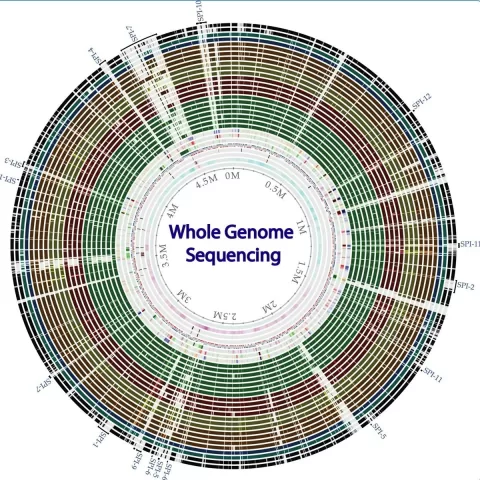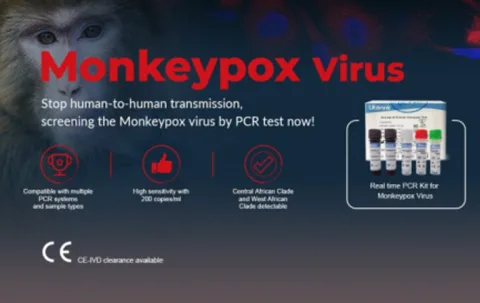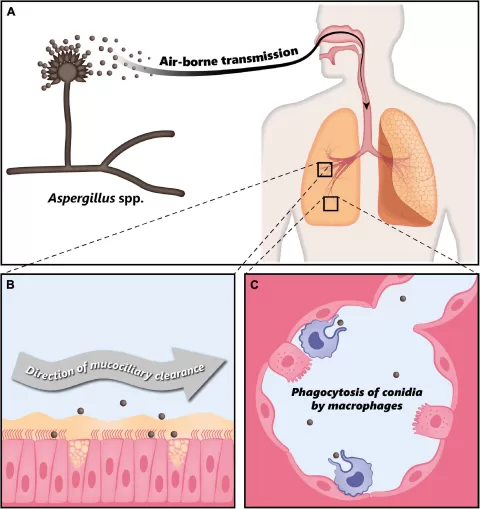SARS-CoV-2 infections have significantly impacted global health since the onset of the COVID-19 pandemic, prompting extensive studies to understand their transmission and effects. In the United States, a unique perspective comes from a national blood donor cohort that documented these infections from 2020 to 2022. This cohort revealed insightful data regarding first infections and COVID-19 reinfections, crucial for public health strategies aimed at controlling infection rates. Additionally, the findings highlight the role of serosurveillance in monitoring immune responses and enhancing our understanding of the virus’s behavior. By utilizing this blood donor data, we can better prepare for future outbreaks and reinforce public health initiatives aimed at reducing morbidity and mortality associated with SARS-CoV-2.
The ongoing phenomenon of SARS-CoV-2 infections, commonly referred to as COVID-19, has necessitated a closer look at the epidemiological patterns emerging from diverse populations. Studies focusing on blood donor groups have provided rich insights into the nature of both initial infections and subsequent reinfections. Such research serves a dual purpose: improving serologic surveillance and informing public health decisions to mitigate the spread of the virus. By analyzing these infection rates and patterns, health authorities can better assess the risk of COVID-19 reinfections and develop strategies aimed at enhancing community immunity. This holistic understanding of the virus’s impact on society is vital for sustaining public health efforts in a post-pandemic world.
Surveillance of SARS-CoV-2 Infections: Insights from Blood Donor Cohortic
Effective surveillance of SARS-CoV-2 infections is crucial for understanding the spread of the virus and implementing timely public health measures. The national blood donor cohort provided valuable data, capturing the nuances of infection rates among individuals who voluntarily donate blood. By analyzing self-reported SARS-CoV-2 infections, health authorities can gain insights into first infections and COVID-19 reinfections, ultimately aiding in the formulation of targeted interventions and resource allocation. This cohort allowed researchers to examine trends over time and understand how factors like variants of concern influenced infection dynamics.
The findings from this blood donor cohort study highlight not only the incidence of first infections but also the significant rate of reinfections, particularly during peak infection periods. By analyzing demographic information alongside infection histories, researchers can discern patterns that might not be visible through traditional surveillance methods. This comprehensive approach could lead to enhanced serosurveillance strategies, promoting a better understanding of how the virus spreads across different populations and age groups, thus informing public health policies more effectively.
The Role of Serosurveillance in Monitoring COVID-19
Serosurveillance plays a critical role in monitoring the impact of SARS-CoV-2 within specific populations, providing a broader context to case numbers and infection rates. By investigating the blood donor cohort, researchers employed serological testing to identify individuals who had been infected with the virus, including asymptomatic cases that may have gone unreported. This method of surveillance enriches the data available to public health officials, unveiling the extent of COVID-19 within communities and allowing for enhanced strategic planning during future outbreaks.
Additionally, serosurveillance data is imperative for understanding the protection levels against SARS-CoV-2 in different demographics, offering clues about immune response and reinfection potential. The analysis revealed that those who had previously been infected with the virus may demonstrate varying degrees of immunity, which can inform the development of targeted vaccination campaigns and public health messaging. As reinfections become more common due to emerging variants, serosurveillance will remain a cornerstone in combating COVID-19 and improving overall public health outcomes.
Understanding COVID-19 Reinfections: Trends and Implications
The analysis of COVID-19 reinfections is increasingly relevant as countries navigate the ongoing pandemic. The observed surge in second infections among blood donors from mid-2021 onward, particularly amid the spread of variant strains like Delta and Omicron, underscores the changing landscape of SARS-CoV-2. At 10.6% of total infections reported in the blood donor cohort, this statistic highlights that reinfections are not merely anomalies but a significant aspect of the pandemic’s reality. Understanding these trends allows public health officials to adapt strategies and reinforce the importance of vaccination and public health protocols.
As reinfections continue to pose risks for both individuals and public health systems, ongoing research is essential. Analyzing the characteristics of those who experience reinfections versus first infections may reveal critical insights into population susceptibilities and risks, guiding future vaccination efforts. Moreover, this information can help strengthen the frameworks for monitoring infection rates in real-time, ensuring that health authorities are prepared to respond effectively as new variants emerge, continuing to prioritize the health of communities nationwide.
Public Health Strategies for Managing SARS-CoV-2 Infections
The findings derived from the blood donor cohort emphasize the need for adaptive public health strategies to manage SARS-CoV-2 infections effectively. With the high incidence of infections, including the reported 25,973 first infections, public health officials must focus on strengthening testing and vaccination efforts to curb transmission rates. Educational campaigns targeting understanding of infection dynamics can play a crucial role in informing the public about the importance of getting vaccinated and adhering to public health guidelines, particularly in the face of new variants.
Furthermore, it is imperative to leverage the data from serosurveillance studies like this one to shape policy decisions and allocate resources more effectively. By identifying high-risk populations and regions with increasing infection rates, health authorities can deploy targeted interventions, such as increased testing locations, vaccination drives, and comprehensive outreach programs. These proactive measures can directly contribute to reducing the overall burden of COVID-19 and managing the challenges posed by both first infections and COVID-19 reinfections.
Demographic Insights from the Blood Donor Cohort Study
Analyzing demographic data from the national blood donor cohort offers valuable insights into how different populations experience SARS-CoV-2 infections. By capturing a diverse range of demographics, including age, gender, and ethnicity, researchers were able to discern patterns that impact infection rates and reinfection likelihood. Understanding these factors is crucial as it allows for tailored responses that address the specific vulnerabilities of certain groups, ensuring equitable access to healthcare and vaccination initiatives.
Moreover, demographic insights can enhance serosurveillance efforts by pinpointing which populations may require more targeted public health interventions. For instance, if certain demographics show higher rates of first infections or reinfections, public health responses can be customized to increase awareness and accessibility to preventive measures, such as vaccination or booster shots. By focusing on community-driven approaches informed by demographic data, public health officials can foster a more nuanced understanding of the pandemic and work towards mitigating its impacts across various population segments.
Long-Term Effects of SARS-CoV-2: Monitoring Health Outcomes
As the COVID-19 pandemic continues, it’s essential to monitor the long-term effects of SARS-CoV-2 infections on health outcomes within the blood donor cohort. While immediate infection rates and reinfection statistics are critical, understanding the prolonged impacts on donor health, including chronic fatigue, respiratory issues, or neurological effects, is equally important. By tracking these outcomes, researchers can gather deeper insights into the virus’s lasting implications on diverse populations, informing healthcare providers about necessary follow-up and support strategies.
Additionally, long-term monitoring can facilitate the identification of trends that might emerge post-infection, enabling health systems to prepare for potential spikes in healthcare needs. This could lead to a better understanding of the correlation between reinfections and heightened severity of health outcomes, encouraging further research into effective treatment pathways and rehabilitation for affected individuals. The blood donor cohort study thus serves as a vital resource, not only for assessing immediate infection dynamics but also for shaping future public health priorities regarding the long-term care of COVID-19 survivors.
The Importance of Continued Serologic Testing in Blood Donor Cohorts
Continued serologic testing in blood donor cohorts is essential for tracking the evolving landscape of SARS-CoV-2 infections. This practice facilitates early detection of antibodies, providing insights into not only individual immunity but also the overall community infection landscape. With a considerable number of donors willing to participate in ongoing serosurveillance studies, the data gathered can inform public health policies and strategies aimed at curbing future outbreaks, particularly as variants of the virus continue to emerge.
Furthermore, the information derived from serologic testing helps assess the effectiveness of vaccines and natural immunity in populations over time. By continuously analyzing the serological responses of donors, researchers can better understand how the prevalence of antibodies against SARS-CoV-2 correlates with infection rates and the potential risk of reinfections. This ongoing surveillance can ultimately contribute to more informed decision-making concerning booster vaccinations and other public health initiatives, ensuring that resources are allocated efficiently and effectively to protect public health.
Integration of Blood Donor Data in Public Health Policies
Integrating blood donor data into public health policies represents a groundbreaking approach to managing SARS-CoV-2 infections. The extensive information provided by the national blood donor cohort, which encompasses infection histories and serological data, can significantly enhance public health decisions. By employing this data, health authorities can develop comprehensive strategies based on observed trends and infection rates, leading to more effective interventions and resource allocation.
This integration facilitates a better understanding of community-specific dynamics regarding SARS-CoV-2 transmission. Overall, using blood donor data can improve the agility of public health responses, helping to ensure that measures taken are pertinent and data-driven, leading to more effective management of the continuing challenges posed by COVID-19. Moving forward, the collaboration between blood donation agencies and public health entities will be vital in shaping a robust response to the pandemic.
Future Directions in SARS-CoV-2 Research and Public Health
The future of SARS-CoV-2 research requires a multifaceted approach incorporating data from diverse sources, including blood donor cohorts. As the understanding of the virus continues to evolve, the integration of serology, demographic analyses, and infection histories can lead to innovative solutions for managing current and future outbreaks. Continuous research efforts will be paramount in examining variants, vaccine efficacy, and reinfection rates, all of which contribute to developing effective public health strategies.
In addition, emphasizing collaboration between researchers, healthcare providers, and public health officials will be essential for translating findings into practice. By fostering an environment of shared knowledge and resources, communities can better prepare for potential future pandemics. Investing in ongoing surveillance and research not only fortifies defenses against SARS-CoV-2 but also enhances overall public health readiness, paving the way for a more resilient future.
Frequently Asked Questions
What trends were observed in SARS-CoV-2 infections within the national blood donor cohort from 2020 to 2022?
The national blood donor cohort exhibited notable trends in SARS-CoV-2 infections, with a peak observed in first infections during the latter part of 2020 and again in the third quarter of 2022. Additionally, the rate of reinfections surged, particularly in the second half of 2021, coinciding with the emergence of the Delta and Omicron variants.
How did COVID-19 reinfections compare to first infections in the blood donor cohort study?
In the blood donor cohort study, COVID-19 reinfections comprised approximately 10.6% of the total reported SARS-CoV-2 infections. The study indicated that out of nearly 29,000 infections reported, over 3,000 were identified as reinfections, highlighting a significant rate of subsequent infections amidst evolving viral variants.
What role does serosurveillance play in understanding SARS-CoV-2 infection rates?
Serosurveillance is crucial in understanding SARS-CoV-2 infection rates as it involves assessing the immunity levels in populations through antibody testing. In the context of the national blood donor cohort, serosurveillance provided insights into both first infections and COVID-19 reinfections, enhancing public health responses and guiding future infectious disease monitoring.
Why is the study of SARS-CoV-2 infections in blood donors important for public health?
Studying SARS-CoV-2 infections in blood donors is important for public health as it offers a unique perspective on infection rates and immunity within a large, diverse population. The data can inform strategies to prevent the spread of COVID-19, especially as new variants emerge, and it supports the development of targeted interventions.
What findings did the national blood donor cohort reveal about the incidence of SARS-CoV-2 infections during variant waves?
The national blood donor cohort revealed that the incidence of SARS-CoV-2 infections, particularly reinfections, was significantly affected by the waves of viral variants, specifically Delta and Omicron. As these variants surged, the rates of second infections notably increased, underscoring the dynamic nature of the pandemic.
How can blood donor data enhance our understanding of SARS-CoV-2 and emerging infectious diseases?
Blood donor data can enhance our understanding of SARS-CoV-2 and emerging infectious diseases by providing comprehensive epidemiological insights. The data facilitates the tracking of infection trends, reinfection rates, and public health outcomes, thus serving as a vital resource for effective disease surveillance and control strategies.
| Study Aspect | Details |
|---|---|
| Study Purpose | To facilitate serosurveillance of SARS-CoV-2 transmission and assess protection against infections and mortality rates. |
| Cohort Description | A cohort of 142,599 repeat blood donors was established by two major U.S. blood collection agencies. |
| Data Collection Period | June 2020 to June 2021, with ongoing analysis into 2022. |
| Reported Infections | 25,973 first infections and 3,088 second infections reported among donors. |
| Peak Infection Rates | First infections peaked in Q4 2020 and Q3 2022; second infections surged during late 2021. |
| Impact of Variants | Second infection rates increased significantly during Delta and Omicron variant waves. |
| Importance of Findings | Distinguishing first infections from reinfections is crucial for understanding the pandemic’s evolution. |
Summary
SARS-CoV-2 infections have played a significant role in public health strategies from 2020 to 2022, particularly as the distinction between first infections and reinfections becomes critical in understanding COVID-19 dynamics. The large-scale study among blood donors revealed that while first infections were prevalent, reinfections also surged, highlighting the importance of continual monitoring and adapting public health responses. Leveraging data from blood donors can enhance surveillance and inform future strategies against SARS-CoV-2 and other emerging infectious diseases.
The content provided on this blog (e.g., symptom descriptions, health tips, or general advice) is for informational purposes only and is not a substitute for professional medical advice, diagnosis, or treatment. Always seek the guidance of your physician or other qualified healthcare provider with any questions you may have regarding a medical condition. Never disregard professional medical advice or delay seeking it because of something you have read on this website. If you believe you may have a medical emergency, call your doctor or emergency services immediately. Reliance on any information provided by this blog is solely at your own risk.








